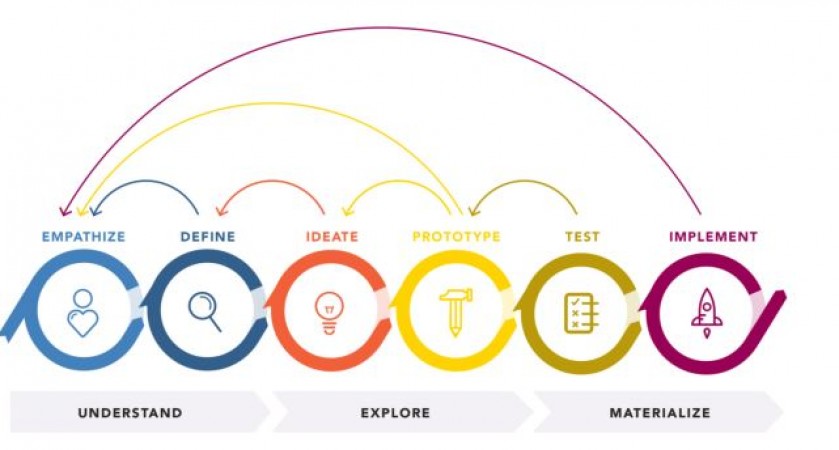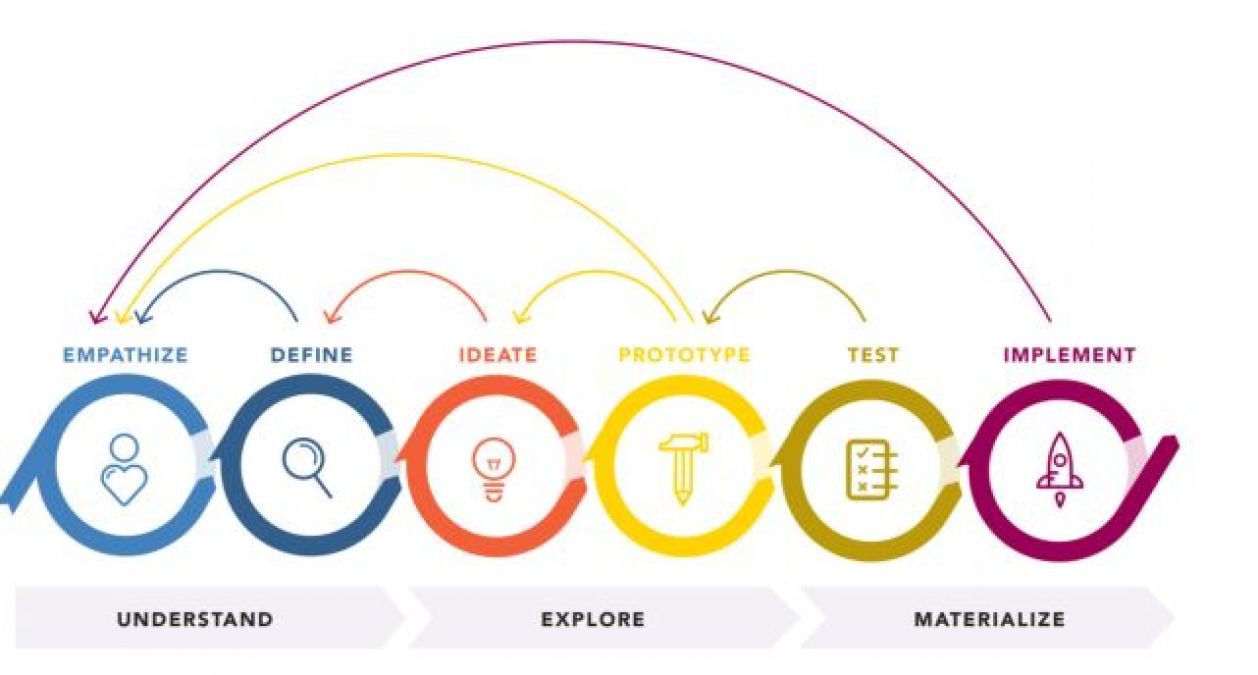
As defined by Tim Brown, CEO of the well-known design enterprise, IDEO, design thinking is a human-based, designers' perspective on customer needs, technological possibilities, and business successes. Consulting global corporations like McKinsey, Accenture, and PwC have all acquired design consultancies that now function at the core of optimizing people's creativity and commitment, thus supporting complete improvement.
Design thinking is the root cause for bringing high-yielding, creative products that help in meeting the requirements of consumers, by observing their behavior and needs. Even for large businesses, design thinking fundamentals helps to know the market better by determining the problem statement, identifying the critical metrics for scaling success, and analyzing use cases. Coming through as a refining process, it also helps brands to implement several tools and techniques to conduct research and predict best-case strategies needed across all the verticals from revenue to product marketing, just in the case of brands like Intuit.
The Rising Demand for Design Thinking
In the last few decades, design thinking has often been ignored by business owners. But today, it is one of the driving forces that has been adding value to brands across the globe. Giants like Apple, IBM, Nike, P&G, and SAP have witnessed tremendous growth of over 21% in the last decade, proving that it isn't a fad at all. Such a rise in productivity across all domains from product-based strategies to customer-centric solutions has led to an increase in demand to learn design thinking amongst beginners and professionals. Professionals are upskilling themselves by enrolling in a Design Thinking Course and learning the subject. But, how is it changing businesses around the world in real-time? Let's find out!
What are the phases of Design Thinking?
While the design thinking process vastly depends on the company architecture and scope of the industry, it can range from having three to seven crucial stages. Each of these phases is based on the principles expressed by the Nobel Laureate Herbert Simon in his work: 'The Sciences of the Artificial.' They can be divided into six primary phases:
1) User Empathy
2) Definition of your customers' requirements, the problem statements, and the insights are drawn from research
3) Ideation of innovative methods for solving issues
4) Starting with a prototype based on the principles
5) Testing for refining and solution creation
6) Implementation of solutions
However, it's important to note that these non-sequential phases aren't an end-all solution, since repeating the steps won't take brands anywhere without looking into critical reviews and considering the presence of mind to resolve errors in any scenario.

Source: Nielsen Norman Group
In the first phase, empathize, the supreme goal is to gather more and more information on customers' perspectives about their requirements. A good starting point can be, what product is worth consuming in a problem scenario, the associated shortcomings, functionalities, and the frustration linked to it.
Once designers combine observations with issues at hand, it would pinpoint them to the exact requirement of their customers and present suitable opportunities for innovation and development in the second phase. They can begin by drawing parallels with users' experiences and reaching a common ground. This is where the third phase, ideation, begins when designers and product developers brainstorm to acquire the unmet needs of the customer from their perspective, enabling them to have total freedom in terms of quality, convenience, and cost-effectiveness. In this process, there could be more than one possible model that may need further reviews and feasibility checks.
In the fourth phase, they're starting with building what is called a close 'similar' of their business idea and learn the crucial elements that work with customer scenarios in real-time. The prototype needs to be based on a tactile methodology and honest, internal feedback and changes to fast-track the development process. Once that is done with designers, they move into the phase when they start turning to their customers for a valued, deciding feedback that helps them know if the prototype can work for them, better than other products in the market. This process doesn't have any fixed timeline.
Implementation: The endgame is when real customers are presented with the idea that has now materialized, making a difference in their lives, in terms of value. While design thinking itself is a time-consuming, technical approach, it doesn't work as a one-time magic potion to bring holistic changes. Instead, it transforms businesses only when applied more frequently and carried out in precision, each time better than the last.
How is Design Thinking used in business?
To thrive in the dynamic market, businesses need to have robust, yielding business strategies to meet customers' ever-rising needs and bring custom products to the table. Design thinking has been embraced by major corporations globally and has been contributing across all facets of their brands in the following ways:
1) Creating business roadmap
Brands can now leverage the most powerful technology and tools to make the right decisions and have clarity on product visualizations in somewhat uncertain market scenarios. Such farsightedness into understanding customers' changing preferences can give them a substantial advantage in the long-run.
2) Identify resolvable pain points
People often interchange design thinking with that of product development, but, on the contrary, it is much more than providing services and generating revenues. When implemented correctly, design thinking helps identify immediate issues with customers' needs and determine a sustainable method to resolve it.
3) Building team collaboration
As mentioned earlier, design thinking helps in bringing teams together and work in harmony to go full-ground in understanding users from an all-round perspective and aligning them with the standard product goals.
Conclusion:
Design thinking is an iterative process that stems from the need for constant analysis and acquired insights, based on understanding external factors that provide the cause for customers' requirements. It may take time for brands to understand and see-through the refining process of design thinking, but in the end, it could be gratifying - for both business owners and customers in the coming times.